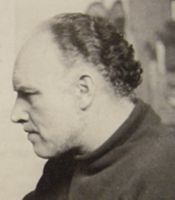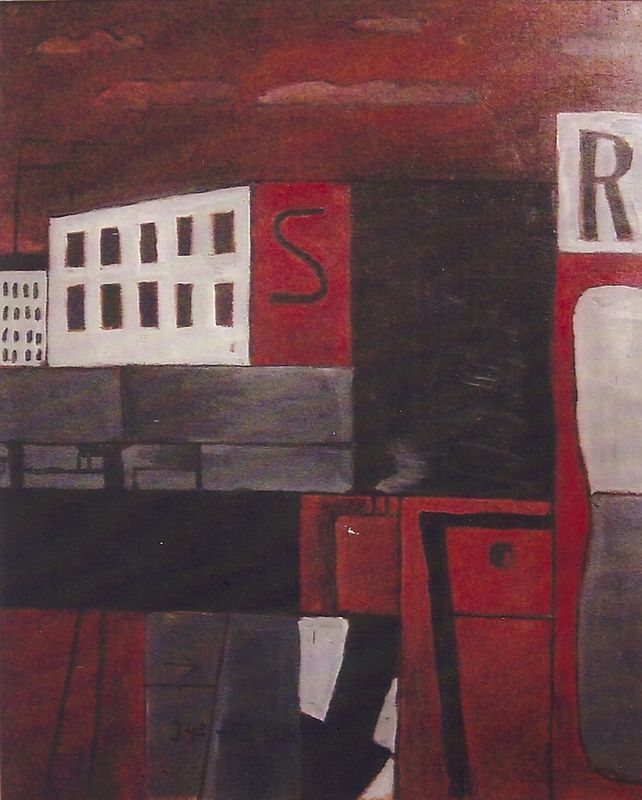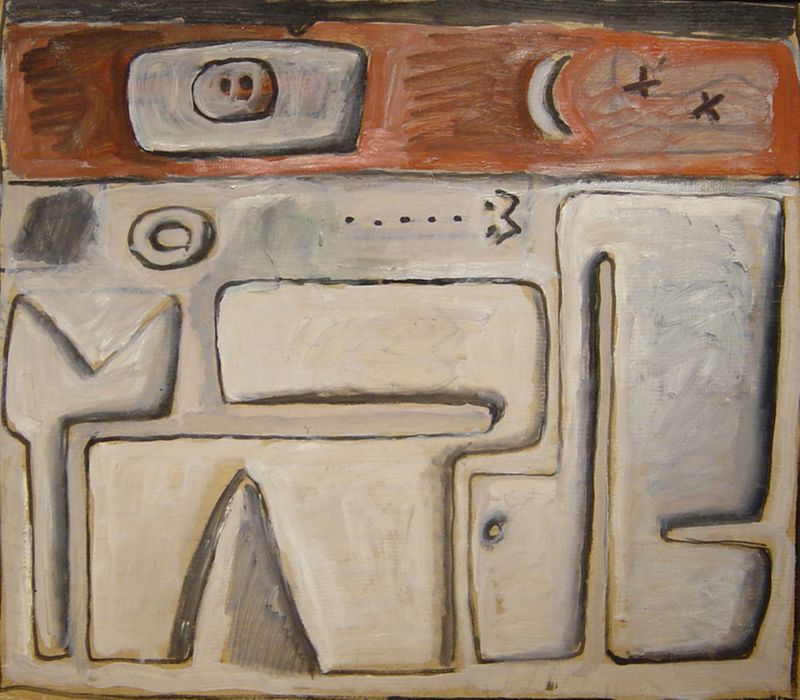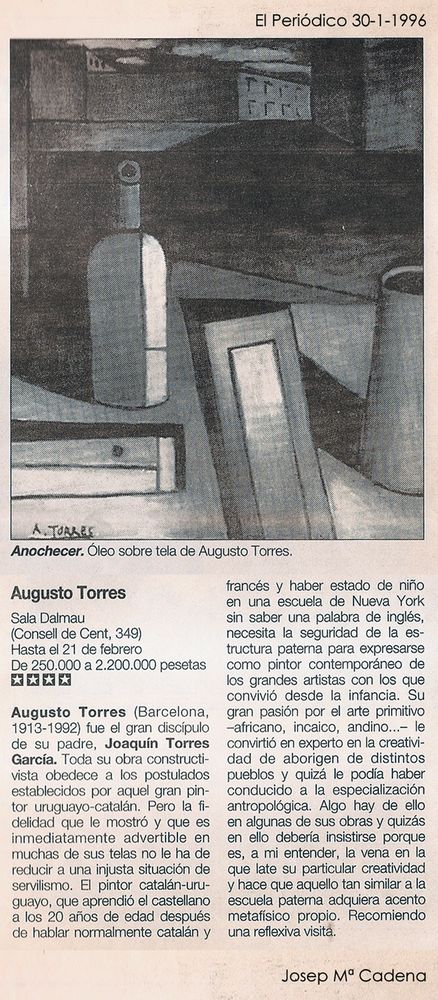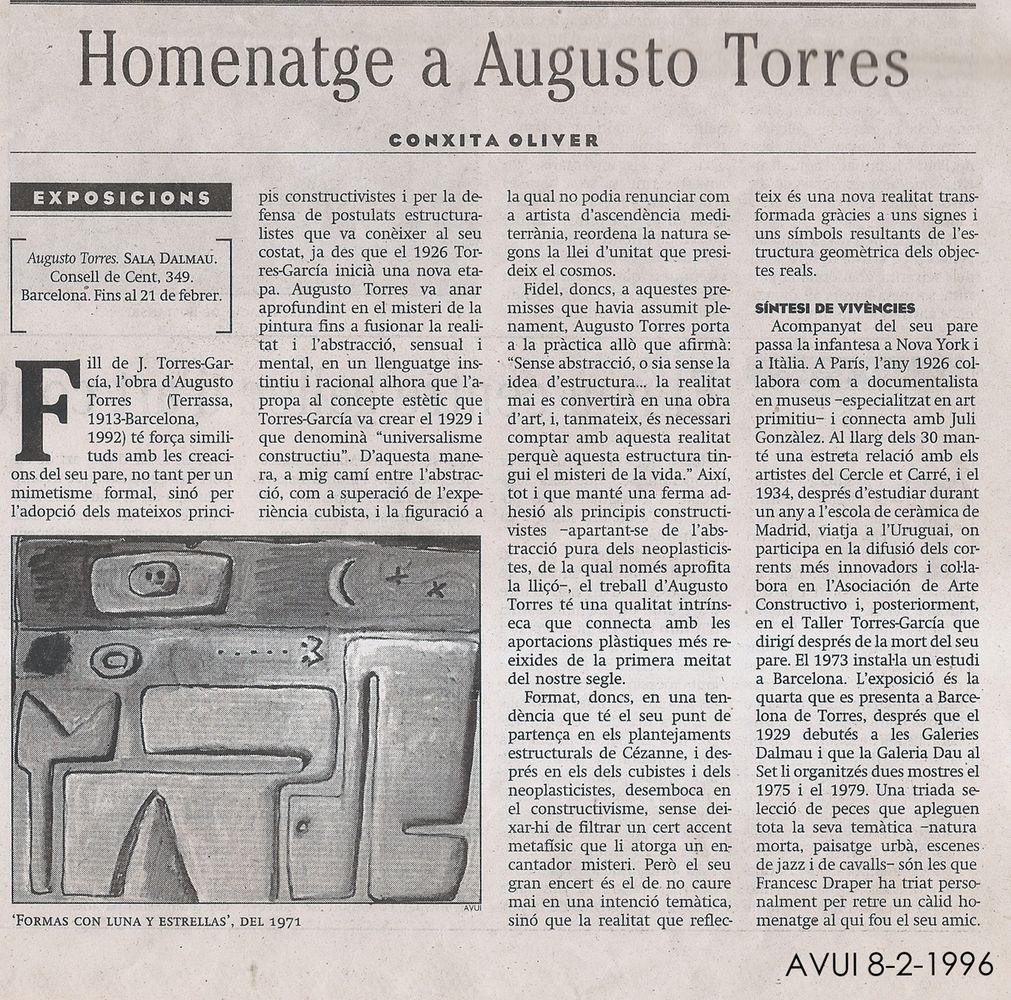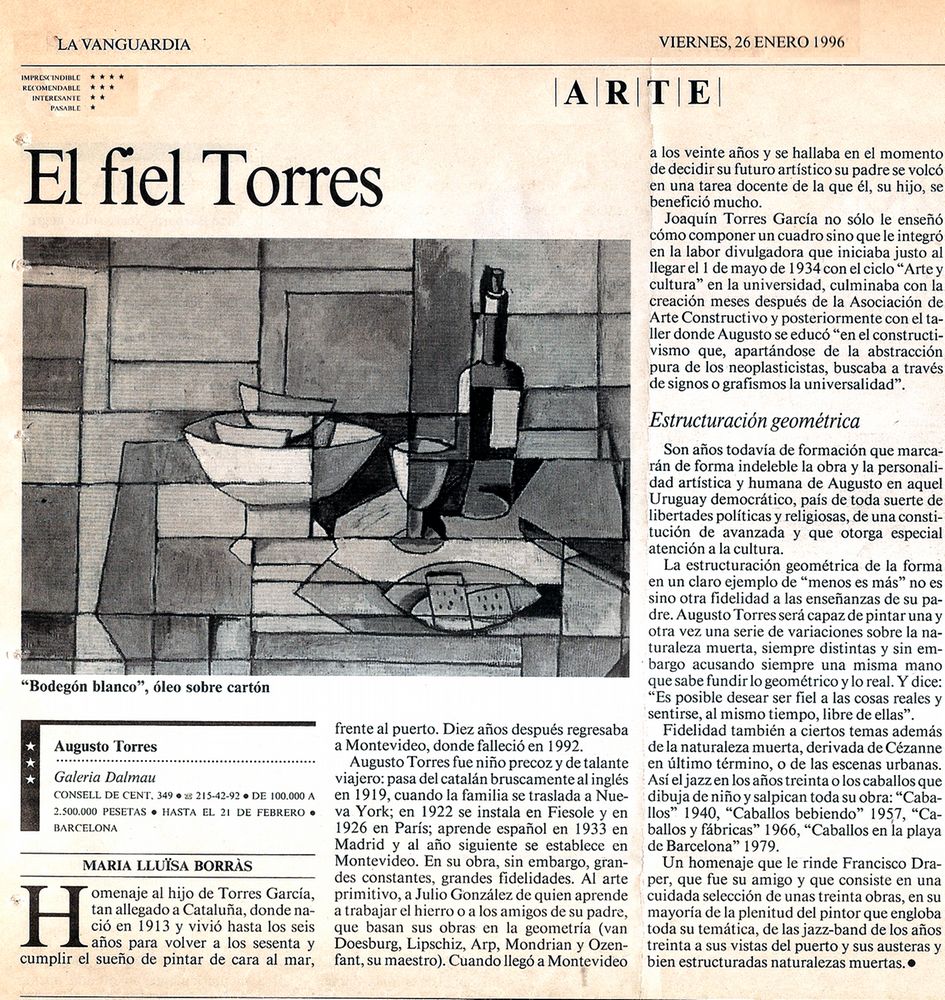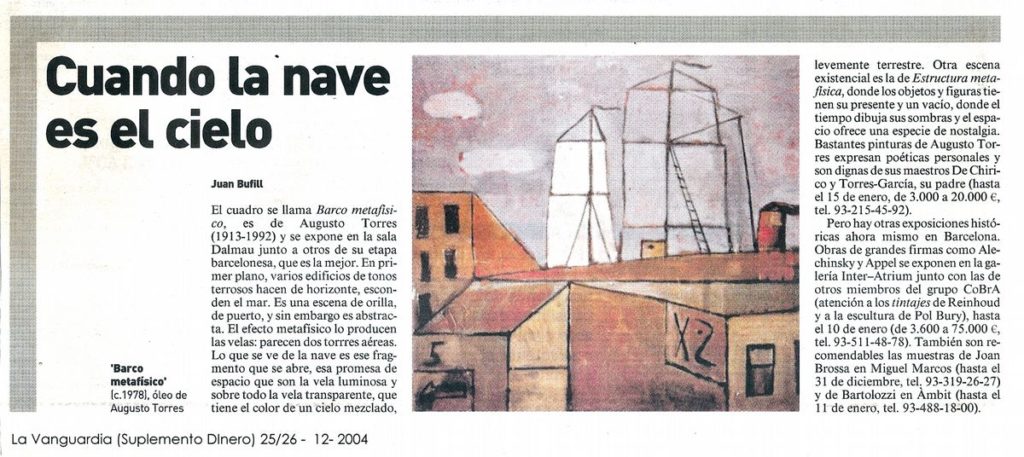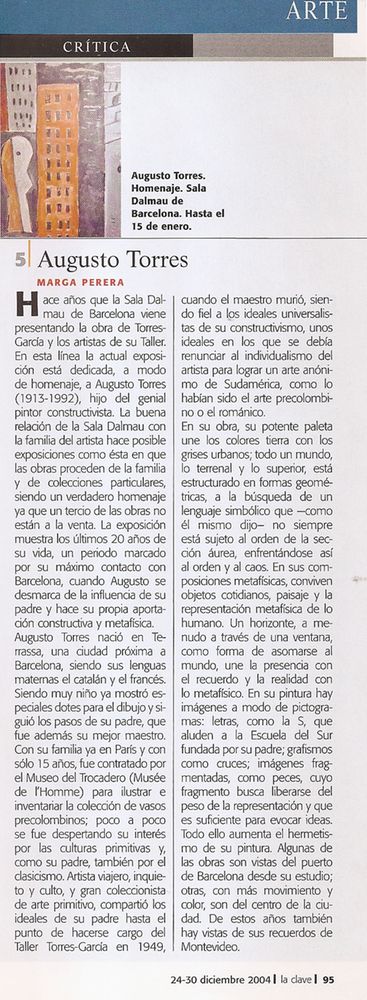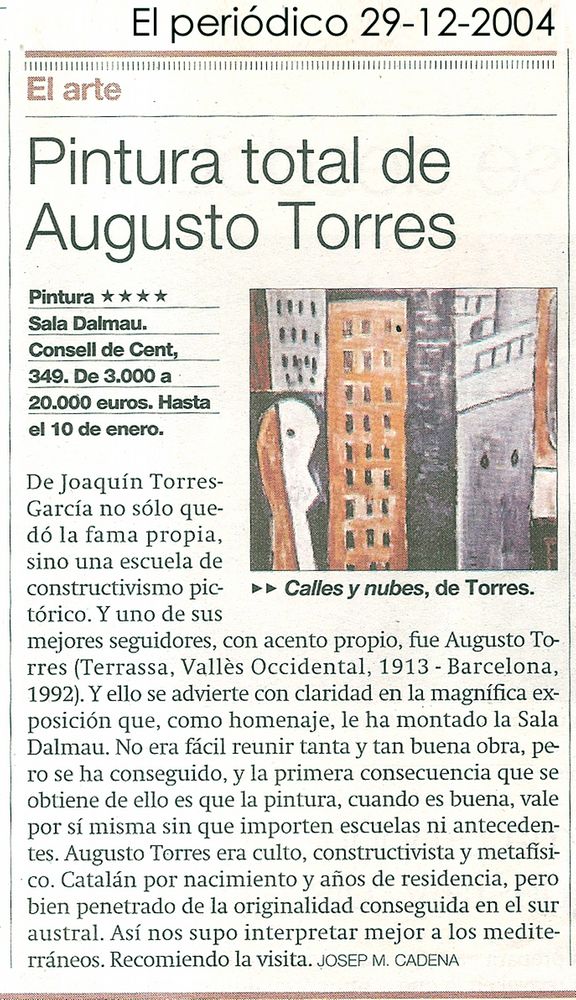Between 1919 and 1926 the family relocates several times: New York, Paris, New York again and Italy are the places they live until they settle in France, first in Ville Franche sur Mer and later in Paris.
At their arrival at the French capital, they settle at Jean Helión’s house who initiates the young Augusto in the ancient African sculpture. There, the friends of the family will be Van Doesburg, Delanuay, Calder, Arp, Mondrian, Severini…with whom the young Augusto will share conversations.
In 1928, he is contracted by the Musée du Trocadero (now Musée d el’Homme) to illustrate and inventory their collection of Nazca and Inca vases, awakening his interest in the history, art, metaphysic and customs of the ancient American Indians.
In 1930 helps Julio González with a replica of Picasso’s “Hommage to Apollinaire”, this allows him to meet the Spanish master as he visits the studio frequently. This year will also the one of his first exhibition, a group show with his sisters Ifigenia and Olimpia at 23 gallery.
Amadée Ozenfant will be his drawing professor, and will study for a year with him until his family moves again, this time to Madrid. There, the visits to the Museo del Prado and the works of El Greco and Velázquez will deeply mark him.
After participating in an exhibition at the Salon des Surindependents in Paris, his father decides to move to his natal Montevideo with his family. This will be a turning point for Augusto, as his father establishes the Asociación de Arte Constructivo (association of constructivist art) and his son will be part of it. The aesthetic ideas behind it are clear: rationality and structure. There he is known as “el catalán” and in 1940 he presents his first show in Montevideo alongside Alceu Ribeiro.
His interest in pre-Colombian art takes him to travel with his brother Horacio and his friend Ribeiro trough Bolivia and Peru to visit the places where those cultures could still be studied.
In 1942 his father opens the Taller Torres-García (Torres-García workshop) where he will teach constructivism to a generation of young painters, such Augusto himself, Julio Alpuy, Gonzalo Fonseca, José Gurvich, Francisco Matto or Alceu Ribeiro among many others. He will exhibit in the taller’s shows and in the making of the famous murals of the Saint-Bois hospital in Montevideo.
After the death of his father in 1949, Augusto continues his work on the Taller and marries his fellow student Elsa Andrada. During the 50s he will collaborate with the architect Antonio Bonet and will visit Europe frequently, exhibiting there several times.
In 1960, he earns a grant from The New School in New York, this allows him to organize an exhibition dedicated to the Taller and also to present his first solo show there.
He will close the Taller Torres-Garcia in 1965 and after years of travelling between Europe and Latin America, he moves to Barcelona in 1975 and for the rest of his life, he will live between there and Montevideo while travelling around the glove.
In the 1980s he will take part in several institutional exhibitions such as the Santa Barbara Museum of Arts in California, America’s Society and The Bronx Museum in New York, The Tretiakov Gallery in Moscow, or the Italian-American institute in Rome, among many others. In Barcelona, the Fundació Miró will present in 1988 the book “Augusto Torres” by the writer, philosopher and former member of the Taller, Guido Castillo.
Augusto Torres passes away in Barcelona in March 1992.


